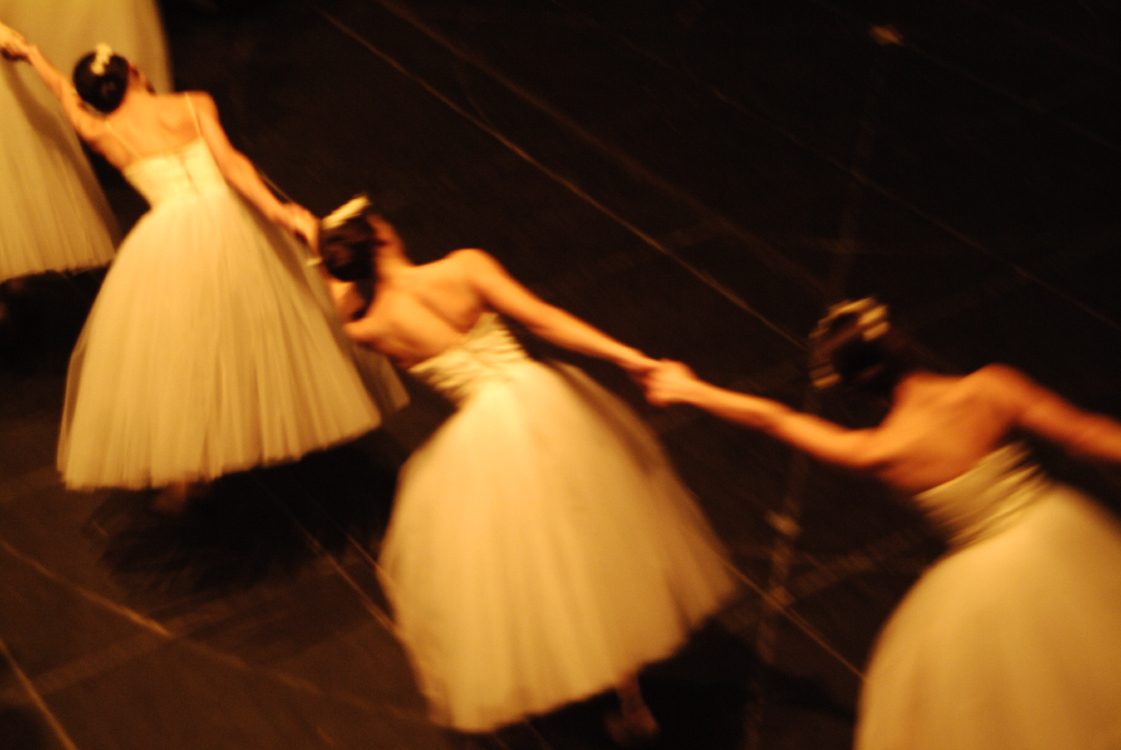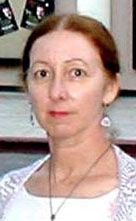 Dance~The Jewish
C~o~n~n~e~c~t~i~o~n Dance~The Jewish
C~o~n~n~e~c~t~i~o~nby Sheila Orysiek |
 |
What I Expect From Music.. a reply to David Amos
SAN DIEGO— What a pleasure to find Columnist David Amos’s very interesting article yesterday “Just What Do We Expect from Music? A good question….and I have several answers. It depends upon who I am and what I’m doing with the music.
Personally, as a dancer, the music is everything. However, dance doesn’t need music to “be” – dance can happen without music, it did initially. Merely, stamping feet or clapping hands, or even in time with one’s own breath and heartbeat. There are some choreographers who compose the dance first and then seek out music. Personally, I find that amazing as for me it is the music that compels my dance. It frames it, impels it, speaks through it and finally ends it. It is the scaffold, the bridge, the house and the cloak. Music sets the entire tone. This becomes clear in an example such as the opening chords of Prokofiev’s Romeo and Juliet – the scream of oncoming tragedy is announced from those chords. We are warned. All else, including dance, follows.
It is possible for
great music to overwhelm dance, but only if the choreographer is not up to the
standard of the composer. Such a piece of music is Bach’s Toccata
and Fugue in D Minor – until Paul Taylor choreographed Promethean
Fire. It is also possible for great dance to be under whelmed by music such
as Michael Smuin’s ballet Song for Dead Warriors (San Francisco
Ballet). Excellent choreography, terrific dancers, dead music – and so the
entire thing died.
As a ballet teacher, the music for class must carry the work, inspire the students and yet not distract them from the business at hand, which is studying the technical values of the dance. This is truer for the beginner rather than the more proficient student. For the beginner, the music needs to be simple, and unassuming. “There," but not intrusive. For the more proficient student, the music should begin to inform and challenge the dancer.
In ballet (and other dance genres, too) the energy of both the music and the teacher carries the class. If either fails the class dies. In the ballet world there are several major syllabus regimes – I won’t go into them now – but they are structured systems by which to teach ballet. They are very popular abroad, less so in the United States. I rejected the opportunity to be mentored into one the major syllabus systems for a number of reasons but largely because the music was preset. The same exact music for the same exact class. No deviation. This for me meant mental, emotional and pedagogical death. I would be bored past tears to have to dance/teach everyday to the same music. I need the stimulation of the music to dance. The same sequence (enchainement) of dance steps takes on an entirely different meaning when danced to a suite from Carmen rather than Beethoven’s Pastoral. The retards, rests, arpeggios, grace notes, add layers, breath, meaning, emotion to the dance. A waltz in a major key is quite a different entity from a waltz in a minor key.
A pianist who plays for ballet class is a true artist, and is never taken for granted. His music changes for the mood of the day, for the class at that moment. It changes not only for the form of the dance (waltz, mazurka, adagio, petite allegro, grand allegro, etc), but for each dancer. I remember all these decades later a superlative ballet pianist who was a specialist in the field – he “felt” each student’s impetus and played for each one individually. The same notes infused with different breath. It was a study in musicianship.
I once had the unique experience of teaching private ballet class to a totally deaf adult student. I set the tempo for her by clapping my hands which she could visually mimic. But I realized I had to have music for myself – I simply couldn’t demonstrate what I wanted her to do without having music playing for myself. It was an interesting illustration to me of how much I was dependent upon it.
Some dancers are “counters” and some are “breathers.” Some simply count the music constantly while others never count. Most do both – more counting with modern music, more breathing with classical composers. But, even for the “breathers” – there is an inner metronome. I found when I had spent hours of the day dancing and teaching, it was hard to turn that metronome off!
As for when I’m not dancing, just listening, working at my craft table, driving, or writing, I can’t bear to listen to music that doesn’t suit my mood. Sometimes I’m in a waltz mood, sometimes Klezmer. If the “wrong” music is playing its like nails on a chalkboard – even if it’s something I ordinarily would like.
For the most part, I am much more of a classicist than into new music, I find it much too repetitive. It also doesn’t seem to have form – or at least I can’t detect any. It sort of wanders around, while I seek structure. I can’t help thinking it would make Mozart cry. The only time new music works for me is if it is expertly choreographed and truly fits the dance. But, I can’t listen to it alone – without dance – simply for itself.
One of my biggest complaints, however, is the volume. Music that makes my theater seat vibrate either causes me to use my ear plugs or leave. Music is not about volume for me – it is about mood. Not necessarily the mood I’m in, but the mood I would like to be in.